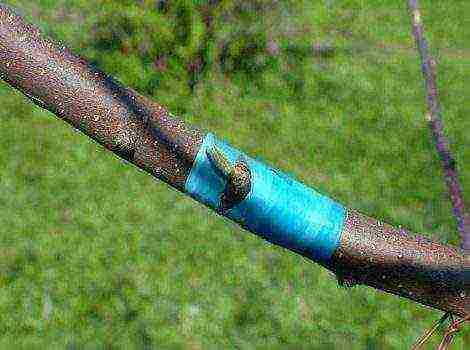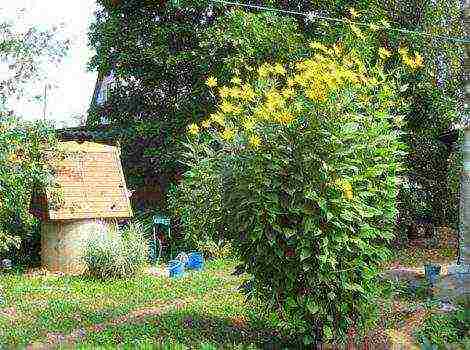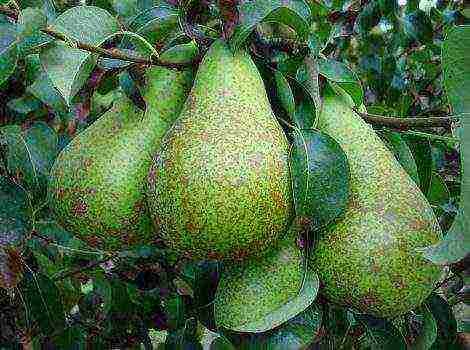Content
One of the most popular crops grown by the country's gardeners is plum. Such a tree is not demanding to care for., but at the same time it brings a great harvest.
When choosing a seedling, they pay attention not only to the taste of the berries themselves, but also to other factors that will speak about the endurance of the variety and its compatibility with the intended place of growth.
Candy tree stunted, reaches a height of no more than 2.5 meters. The rounded crown and graceful, openwork leaves of an emerald hue give it a special charm. During the flowering period, snow-white buds appear.
This variety belongs to the early, and you can start harvesting the fruits at the end of July. If you must leave one tree, you can get up to 25 kilograms of harvest.
As for the fruits themselves, they are not distinguished by a delicate and sweet taste. Yellow, honey pulp covered with a delicate and thin skin. The ripening period begins when the plums gain a mass of 30-35 grams.
Given the good frost resistance of the tree, which can withstand temperatures up to -20 degrees, it can be grown in areas with a temperate climate or in southern latitudes.
Varieties with similar characteristics - Mashenka and Dashenka
V.P. Yagunov, on the basis of the Suzdal state sorting site, bred varieties that resemble Candy in their characteristics.
Variety Mashenka - a vigorous tree, with a round, pyramidal shape. It begins to bear fruit in 4-5 years of life, while bringing a stable and abundant harvest. Fruit ripening period is average.
The plums themselves are large in size, on average, their weight reaches 35-40 grams. The taste is juicy and delicate, the skin is thin, maroon with a waxy bloom, the pulp is yellow.
Given the good frost resistance and unpretentiousness to the composition of the soil, it is recommended to plant such a variety in the Central regions of the country. Just like Candy, Mashenka needs pollinators from neighbors.
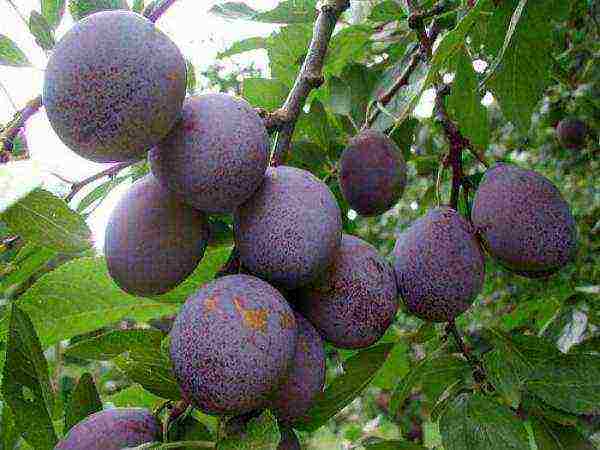
Variety Dashenka - a tree of medium height with a pyramidal crown. Begins to bear fruit from 4-5 years old and brings a stable and high-quality harvest.
The fruits are sweet and sour, weighing 40-50 grams, the skin color is pink-red, while there is a bluish bloom. The pulp is tender and juicy. The ripening period begins at the end of September, and you can harvest until the beginning of November.
The winter hardiness of the variety is very good, it is zoned for the northern regions of the country. Also requires additional pollination.
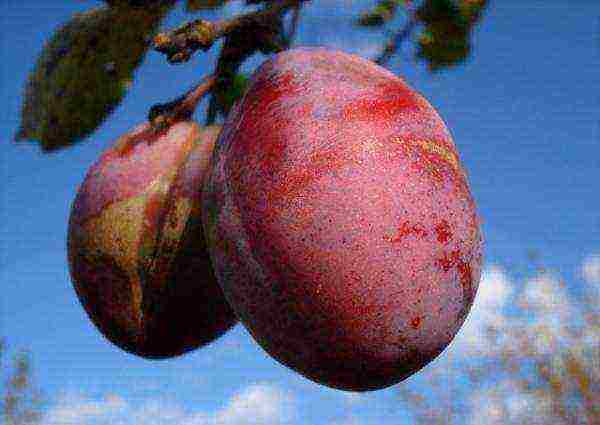
Breeding history
Given that the climate in Russia is quite harsh and many varieties of fruit crops simply cannot survive in such conditions, domestic breeders are working on breeding the most resistant samples.
One of the best results of the work carried out is considered Plum Candy, which was bred by Professor G.A. Kursakov. on the basis of the Timiryazin Academy in Michurinsky Garden.
Advantages and disadvantages
The pluses include:
- The tree bears a stable and plentiful harvest, and begins to bear fruit as early as the 4th year of life.
- The decorative appearance will perfectly fit into any landscape design.
- The taste of the fruit always remains at the highest level.
- Candy is unpretentious to the climate and is able to withstand low temperatures.
- High resistance to the most common plum diseases.
There are also disadvantages:
- Taking into account the peculiarities of the structure of the tree when gaining a large mass, the fruits begin to crumble.
- The crop is not distinguished by good transportability and long keeping quality.
- This variety requires additional pollinators, so it cannot become the only plum in the garden.
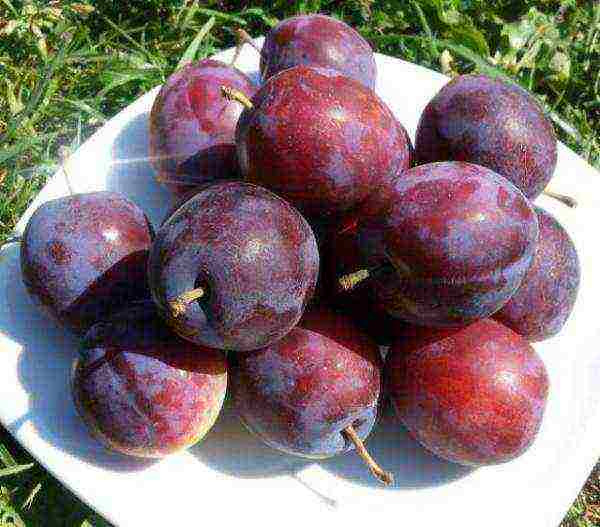
Natural Growth Region
Candy was brought out for cultivation in the Central region... But given the frost resistance and unpretentiousness of the variety, it can be grown both in southern and northern latitudes.
For areas with cold climates, the tree will have to additionally prepare for wintering, covering the bole.
Landing rules
First you need to decide on the place where you plan to place the tree. In order for the tree to grow, develop and bring a good harvest, you need to take into account some of its features:
- Direct sunlight must necessarily fall on the site, because the plum belongs to thermophilic plants and it is very important for it to have maximum lighting. Given the small growth of the tree, it is preferable to plant it on the south side of other plants.
- Plums should not be planted in places with a high groundwater table.
- Gardeners do not recommend using low-lying areas where rain and melt water accumulates.
- For this variety, loamy soil or clay will be preferable. The tree does not tolerate excessive acidity of the soil. To remedy this situation, lime, ash or dolomite flour is added to the planting pit.
Candy is recommended to be moved to open ground in early spring.so that the tree has time to get stronger before the onset of cold weather.
But also you can plant a tree in the autumn... But it will definitely need to be covered with spruce branches or roofing felt.
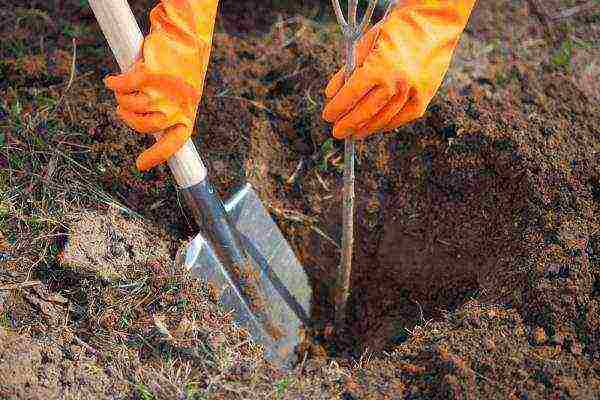
Experienced gardeners recommend adhere to the following rules:
- Most often, plums are planted at a distance of 3-4 meters from each other.
- A planting hole for trees, measuring 50 centimeters in depth and 70 in width, is prepared in advance so that it has time to infuse before carrying out work.
- The top fertile soil layer is mixed with humus, superphosphate and urea. This mixture should fill one third of the pit.
- It is also necessary to immediately install a support, which can serve as a long stick.
- The seedling must be carefully placed in the hole and the roots spread.
- The root collar should be 3-5 centimeters above ground level.
- At the next stage, the tree will need to be sprinkled with fertile soil and lightly tamped.
- After planting, the plum is watered abundantly using 20-30 liters of water and mulched to keep the moisture as long as possible.
Care features
Next to the trunk, the soil is dug to a depth of 8 centimeters, as we move to the outer circle, this indicator is increased to 10-12 centimeters.
In order not to damage the root system during the digging process, it is recommended to put the shovel on the edge.
Watering Candy should be 5 times during the whole season., but during periods of drought, the intensity of moisture application increases. Excessive moisture can lead to root rot, so you need to carefully monitor this indicator.
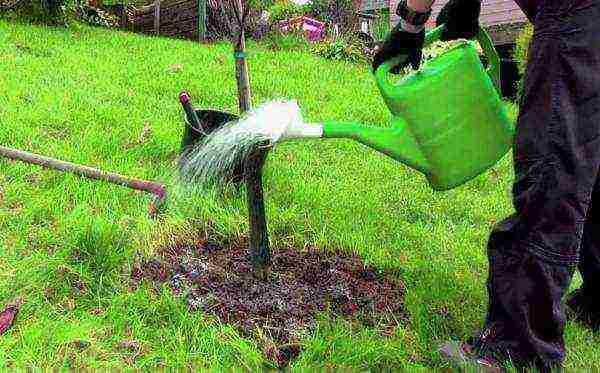
Plum does not require reinforced subcortexes and frequent fertilization:
- starting from 3 years of age, during the spring digging, you need to add 3-5 buckets of humus or slurry, 300 grams of superphosphate and 200 grams of potassium salt;
- also during the growing season, nitrogen fertilizers are applied;
- phosphorus-potassium dressing is carried out before flowering.
In the first 1-2 years, the plum is not fertilized, the young tree will have enough nutrients introduced during planting.
An important role in the care process is also played by loosening and mulching the soil... These processes will help the tree receive nutrients faster and retain them for as long as possible.
To avoid the appearance of various diseases or pests, you need to regularly remove root shoots and carry out sanitary pruning, in which they get rid of dry and damaged branches.
It is worth considering that Candy can't pollinate on its own, therefore, it is very important for her to have neighbors with a similar flowering period. These include Renkold State Farm and Early Zarechnaya.
Reproduction methods
There are several ways to propagate plums:
- Graft - for this, you need to acquire a scion, that is, cuttings of the grafted variety and stock, a tree on which the grafting will be carried out. Late spring - early summer is suitable for such a procedure. The first step will be the production of the same oblique cuts on the rootstock and scion, then they need to be tightly connected and wrapped with foil. After 4 weeks it can be removed.
- Root offspring - a healthy and large shoot is selected, which is located at a great distance from the mother. It will need to be cut at a distance of 15 centimeters from the root collar, and planted in a new place.
- Root cuttings - you need to prepare such material in the fall. Having retreated from the tree trunk by 1 meter, the roots are dug out. Among them, the strongest and healthiest are selected, they must be cut off. Store the cuttings either in a dug trench under sand and peat or in a cold room. In early May, they are planted under a film that can be removed in a month. Before the emergence of shoots, the place should be shaded and avoid drought. If several shoots appear, the strongest is selected among them, the rest must be removed.
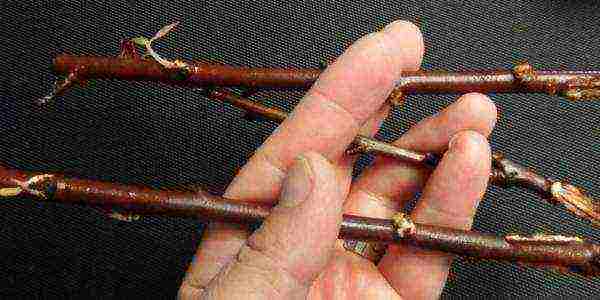
Diseases and pests
Candy is highly resistant to various diseases and pests. But in order to secure the tree as much as possible, the following measures should be taken:
- Regular sanitary pruning will help prevent insect breeding. Also, this procedure contributes to the overall health of the tree;
- regular whitewashing of the tree trunk in spring and autumn will protect it from sunburn and pest attacks;
- spraying the crown and trunk with fugnicides prevents the development of many diseases.
Besides, this variety is unpretentious to soil fertility and is able to withstand cold winter temperatures.
